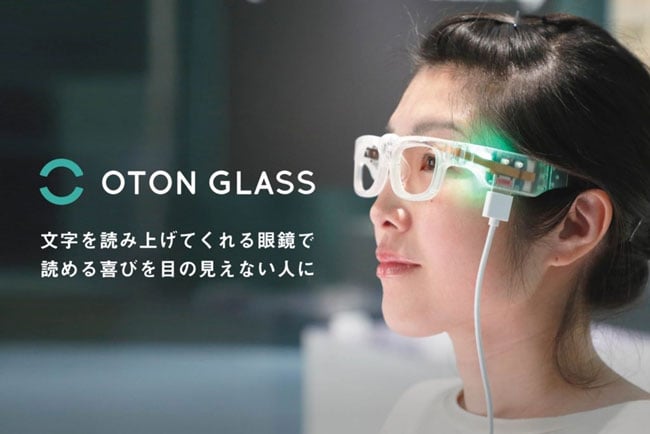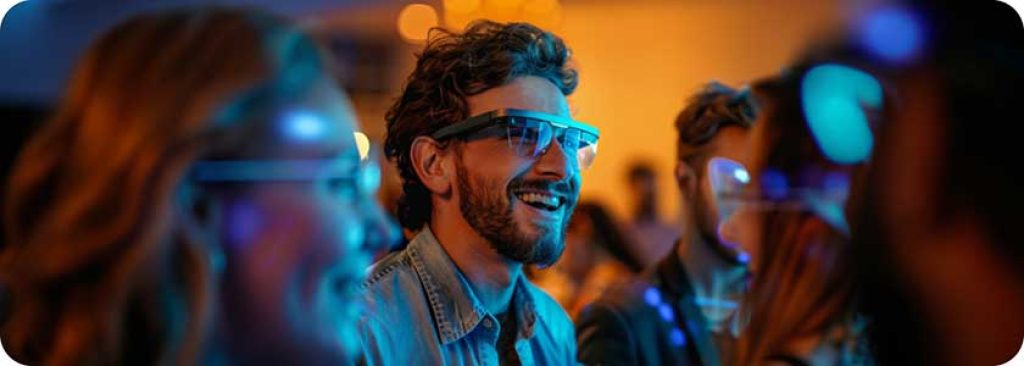AI-Powered Visual Aids: The Next Step in Assistive Technology for the Blind
AI-Powered Visual Aids: The Next Step in Assistive Technology for the Blind
Blog Article
Enhancing Ease Of Access With Assistive Innovation for the Blind
The combination of assistive innovation for the blind represents a critical advancement in accessibility, fundamentally modifying how individuals browse their settings and involve with culture. From screen readers to ingenious smart walking canes, these tools not only enhance self-reliance but also promote inclusivity in different spheres of life. As we explore the varied sorts of assistive devices and their concrete influence on day-to-day living, it comes to be important to take a look at exactly how recurring technological developments are reshaping the landscape of assistance for the blind area. What implications do these developments hold for the future of accessibility?
Overview of Assistive Modern Technology
Assistive technology describes a range of tools and software created to boost the capacities of individuals with specials needs, including those that are blind or visually damaged. This modern technology plays a critical function in advertising freedom and improving the high quality of life for individuals. By giving alternate techniques for accessing info and executing everyday tasks, assistive innovation encourages individuals to browse their settings much more effectively.
The development and application of assistive innovation accept a selection of concepts targeted at promoting availability. These principles include user-centered style, which focuses on the needs and preferences of the person, and the integration of innovation right into everyday tasks. Such developments make certain that assistive tools are not only practical yet also user-friendly and simple to utilize.
Additionally, assistive technology incorporates a diverse range of options, from low-tech alternatives like magnifiers to sophisticated innovations such as display visitors and Braille screens. The continuous evolution of this area is driven by the demand to attend to the one-of-a-kind challenges faced by people with aesthetic impairments (Wearable technology for low vision). As innovation proceeds to development, the possibility for enhancing ease of access and advertising inclusivity continues to be appealing, eventually contributing to an extra fair culture

Sorts Of Assistive Gadgets
Many sorts of assistive devices are offered to support people who are blind or visually damaged, each created to resolve specific demands and obstacles. These devices can be generally classified into 3 major types: low-tech, mid-tech, and state-of-the-art remedies.
Low-tech gadgets consist of items such as magnifiers, Braille labels, and tactile maps. These are relatively easy devices that enhance the customer's ability to interact with their setting without needing intricate technology.
Mid-tech tools often include advanced functions, such as digital magnifiers and mobile Braille note-takers. These gadgets can use capabilities like speech outcome, allowing individuals to access details much more successfully.

Effect on Daily Living
The availability of various assistive tools considerably boosts the lifestyle for individuals that are visually damaged or blind, influencing their daily living in extensive methods. By integrating modern technologies such as display viewers, Braille displays, and audio summary solutions right into their routines, customers obtain better autonomy and self-reliance. These tools promote accessibility to details, allowing people to execute day-to-day jobs, such as reviewing e-mails, browsing public spaces, and enjoying media content.
In addition, assistive tools equip individuals to involve even more totally in social interactions and community tasks. The ability to use mobile phones geared up with accessibility attributes enables for smooth communication and connection with others. This connection fosters a feeling of belonging and reduces feelings of isolation.
In expert settings, assistive technology supports efficiency by enabling people to full work tasks successfully. Tools like voice acknowledgment software application and specialized zoom tools make it possible for customers to take part in the workforce on equal ground with their sighted peers.

Developments in Modern Technology
Current technological improvements have actually substantially transformed the landscape of devices readily available for people that are blind or aesthetically damaged. The assimilation of expert system (AI) and artificial intelligence has triggered applications that boost navigation and things recognition. For example, smartphone applications can currently use AI to determine and explain environments in real-time, offering individuals with valuable contextual information.
In addition, innovations in haptic technology have actually caused the advancement of wise walking canes equipped with sensing units that find obstacles and supply responsive feedback. This equips individuals to navigate their environment with enhanced self-confidence and freedom. In addition, technologies in text-to-speech software program and braille display screens have actually enhanced the accessibility of digital material, permitting useful source smooth interaction with numerous media.
Wearable innovations, such as clever glasses, are additionally making strides in assisting aesthetic impairment. As innovation proceeds to advance, the capacity for even more transformative tools continues to be on the horizon.
Future Trends and Innovations
As technology rapidly advances, the future of assistive tools for individuals who are blind holds tremendous assurance. Developments in expert system (AI) and artificial intelligence are poised to change the means blind individuals connect with their environments. As an example, AI-driven applications are being created to improve object acknowledgment, permitting individuals to identify and browse their environments with better simplicity and precision.
Additionally, improvements in haptic feedback modern technology are allowing the production of tactile maps and navigating aids that provide real-time details via touch. These advancements not only enhance movement but additionally foster freedom. In addition, wearable tools outfitted with increased truth (AR) attributes are arising, using customers aesthetic info with sound summaries, consequently linking the space in between the physical and electronic globes.
Moreover, the assimilation of clever home modern technology offers brand-new possibilities for accessibility, enabling individuals to control their living settings through voice commands or smart device applications. As collaboration between technology programmers and the blind area proceeds, the concentrate on user-centered style will ensure that future technologies are tailored to fulfill the distinct demands of this population (Wearable technology for low vision). The trajectory of assistive innovation guarantees an extra empowering and comprehensive future for individuals that website link are blind
Verdict
In conclusion, assistive modern technology plays an essential function in improving ease of access for individuals with aesthetic impairments. The varied selection of tools, consisting of screen readers and smart canes, dramatically enhances daily living and cultivates independence. Continuous advancements in modern technology and user-centered design guarantee that eyesight check up near me these devices cater efficiently to the unique demands of the blind area. As advancements development, increased inclusivity and empowerment can be prepared for, ultimately improving the quality of life for those influenced by visual impairments.
The assimilation of assistive technology for the blind stands for a critical innovation in ease of access, fundamentally altering just how individuals browse their settings and involve with culture.Assistive modern technology refers to an array of tools and software program made to improve the capabilities of individuals with handicaps, consisting of those that are blind or visually impaired. Wearable technology for low vision.As technology quickly proceeds, the future of assistive devices for people that are blind holds tremendous guarantee. The trajectory of assistive innovation promises a much more inclusive and empowering future for individuals that are blind
In verdict, assistive modern technology plays a vital role in boosting accessibility for individuals with visual problems.
Report this page